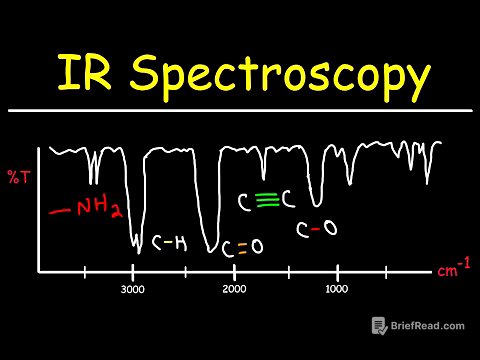TLDR;
This YouTube video by THE WHITE ARMY features a clinical case discussion with Professor Anil Suri, focusing on the diagnosis and management of a parotid gland swelling. The discussion covers history taking, physical examination, differential diagnoses, relevant anatomy, investigations, and surgical approaches. Key points include differentiating between benign and malignant parotid tumors, understanding the facial nerve's relation to the parotid gland, and surgical techniques for parotidectomy.
- Detailed history taking is crucial for differential diagnosis.
- Thorough physical examination helps in assessing the nature and extent of the swelling.
- Understanding the anatomy of the parotid gland and facial nerve is essential for surgical planning.
- Investigations like FNAC and imaging aid in confirming the diagnosis.
- Surgical approaches vary based on the tumor's location and involvement.
Introduction [0:00]
The video starts with a welcome note to everyone joining the clinical case discussion. Professor Anil Suri, an expert in the field, is introduced. The session aims to discuss a clinical case, focusing on the approach to diagnosis and management.
Patient History [0:43]
The patient is a 50-year-old female from Mysore, who is a housewife. She belongs to the upper-middle class socio-economic status. Her chief complaint is a swelling below the right ear since two years. Initially, the swelling was small (1-2 cm) and gradually progressed to 4-6 cm. The swelling isn't associated with pain, discharge, fever, or any difficulty in eye closure, food chewing, or tongue movement. There's no history of similar swellings on the left side or any other significant medical history like diabetes, hypertension, or tuberculosis. She hasn't taken any treatment for this condition.
Differential Diagnosis [3:08]
Based on the history, the initial differential diagnoses should include parotid gland tumors, specifically benign ones. The gradual, painless swelling suggests a slow-growing lesion, possibly in the deep neck. It's important to determine if the swelling is within the parotid gland or in the deep neck. The absence of pain or facial nerve involvement makes malignancy less likely, but it still needs to be considered.
Importance of Detailed History [6:55]
A detailed history is crucial to rule out other conditions. The absence of previous similar complaints makes certain systemic diseases less likely. Family history is also important to rule out hereditary conditions. Marital status and children are noted as part of the patient's background.
Key Points in History Taking [10:06]
The key points in the history are the swelling itself, its duration, and the absence of facial nerve involvement. The size and progressive nature of the swelling are important factors. The absence of symptoms suggestive of facial nerve palsy is also significant.
General Physical Examination [11:06]
The general physical examination reveals a middle-aged, well-built and nourished female. She is conscious, cooperative, and well-oriented to time, place, and person. Her height is 155 cm, weight is 65 kg, and BMI is 23.34. Vital signs are within normal limits, with a blood pressure of 130/80 mmHg, pulse rate of 76/minute, respiratory rate of 16/minute, and temperature of 98.6 degrees Fahrenheit. There's no pallor, icterus, or generalized lymphadenopathy.
Local Examination [12:15]
On inspection, a 4x4 cm swelling is noted on the right side, below the ear. Palpation reveals a firm, non-tender, globular, and solid swelling in the right parotid region. The swelling extends anteriorly to the masseter muscle, posteriorly to the mastoid process, superiorly to the zygomatic arch, and inferiorly to the angle of the mandible. The skin over the swelling is pinchable. The left parotid region appears normal. There is no palpable cervical lymphadenopathy.
Facial Nerve Examination [13:39]
Examination of the facial nerve shows normal movements of the forehead, eyelids, and mouth. There is no deviation of the angle of the mouth on smiling. The patient is able to wrinkle the forehead, close the eyes tightly, and puff out the cheeks without any asymmetry.
Systemic Examination [14:29]
Systemic examination of the cardiovascular and respiratory systems is normal. Neurological examination reveals no deficits.
Provisional Diagnosis [14:53]
The provisional diagnosis is a benign parotid tumor, likely a pleomorphic adenoma.
Summary of History and Examination [15:20]
The patient is a middle-aged lady presenting with a gradually progressive swelling below the right ear, not associated with pain or discharge. Examination reveals a firm, globular swelling in the right parotid region, with no facial nerve involvement.
Location and Extent of Swelling [17:30]
The swelling is located in the tail of the parotid gland, extending from the mastoid process to the angle of the mandible. It is important to note the relationship of the swelling to the sternocleidomastoid muscle.
Importance of Facial Nerve Examination [18:26]
The facial nerve examination is crucial to assess the involvement of the nerve. The location of the tumor in relation to the facial nerve determines the surgical approach.
Differential Diagnosis Revisited [18:57]
Given the clinical findings, the differential diagnosis includes benign tumors like pleomorphic adenoma, Warthin's tumor, and other rare tumors. Malignant tumors are less likely due to the absence of pain and facial nerve involvement.
Additional Clinical Findings [20:17]
The discussion emphasizes the importance of noting the consistency and mobility of the swelling. A smooth, well-defined, and mobile swelling is more likely to be benign.
Facial Nerve Involvement [21:05]
The absence of facial nerve involvement is a key factor in favor of a benign lesion. The ability to wrinkle the forehead, close the eyes tightly, and smile symmetrically indicates that the facial nerve is intact.
Consistency of the Swelling [21:55]
The consistency of the swelling is described as firm, which is typical of pleomorphic adenomas.
Trigeminal Nerve Examination [23:37]
The trigeminal nerve examination is important to rule out any involvement of the sensory nerves in the area.
Benign Tumors of the Parotid Gland [24:30]
The discussion lists common benign tumors of the parotid gland, including pleomorphic adenoma, Warthin's tumor, and oncocytoma.
Anatomy of the Parotid Gland [25:08]
The anatomy of the parotid gland is discussed in detail, including its superficial and deep lobes, and its relationship to the facial nerve.
Venous Drainage of the Parotid Gland [27:01]
The venous drainage of the parotid gland is described, including the retromandibular vein and its tributaries.
Arterial Supply of the Parotid Gland [28:14]
The arterial supply of the parotid gland is discussed, including the external carotid artery and its branches.
Facial Nerve Identification [30:55]
Techniques for identifying the facial nerve during surgery are discussed, including palpating the mastoid process and using anatomical landmarks.
Surgical Approaches to Parotidectomy [32:11]
Different surgical approaches to parotidectomy are discussed, including superficial parotidectomy and total parotidectomy.
Investigations [33:11]
The investigations include FNAC (Fine Needle Aspiration Cytology) and imaging studies like ultrasound and CT scan. FNAC helps in confirming the diagnosis, while imaging studies help in assessing the size and extent of the tumor.
FNAC Results [34:25]
The FNAC report comes back as pleomorphic adenoma, confirming the diagnosis.
Surgical Management [34:47]
The surgical management involves superficial parotidectomy, where the superficial lobe of the parotid gland is removed along with the tumor, while preserving the facial nerve.
Complications of Parotidectomy [35:17]
Potential complications of parotidectomy include facial nerve injury, Frey's syndrome (gustatory sweating), and hematoma.
Incision for Parotidectomy [36:45]
The incision for parotidectomy is described, starting from the preauricular region and extending down along the neck.
Skin Flap Elevation [38:37]
The technique for elevating the skin flap is discussed, including the layers of fascia and the importance of preserving the great auricular nerve.
Facial Nerve Dissection [41:54]
The dissection of the facial nerve is described in detail, including identifying the main trunk and its branches.
Preservation of Facial Nerve [43:32]
The importance of preserving the facial nerve during parotidectomy is emphasized.
Identifying the Facial Nerve Trunk [44:13]
Techniques for identifying the facial nerve trunk are discussed, including using anatomical landmarks and nerve stimulators.
Tumor Removal [44:56]
The technique for removing the tumor is described, including dissecting it away from the facial nerve branches.
Frey's Syndrome [46:49]
Frey's syndrome, or gustatory sweating, is discussed as a potential complication of parotidectomy.
Pathophysiology of Frey's Syndrome [48:30]
The pathophysiology of Frey's syndrome is explained, involving the misdirection of parasympathetic nerve fibers to sweat glands in the skin.
Management of Frey's Syndrome [49:43]
The management of Frey's syndrome includes conservative measures and surgical options like tympanic neurectomy.
Surgical Tips and Tricks [50:19]
Surgical tips and tricks for parotidectomy are shared, including techniques for identifying and preserving the facial nerve.
Recurrence of Pleomorphic Adenoma [51:15]
The possibility of recurrence of pleomorphic adenoma is discussed, and the importance of complete tumor removal is emphasized.
Great Auricular Nerve Grafting [55:37]
The use of great auricular nerve grafting in cases of facial nerve injury is discussed.
Conclusion [57:40]
The session concludes with thanks to Professor Anil Suri for his valuable insights and guidance on the clinical case.









